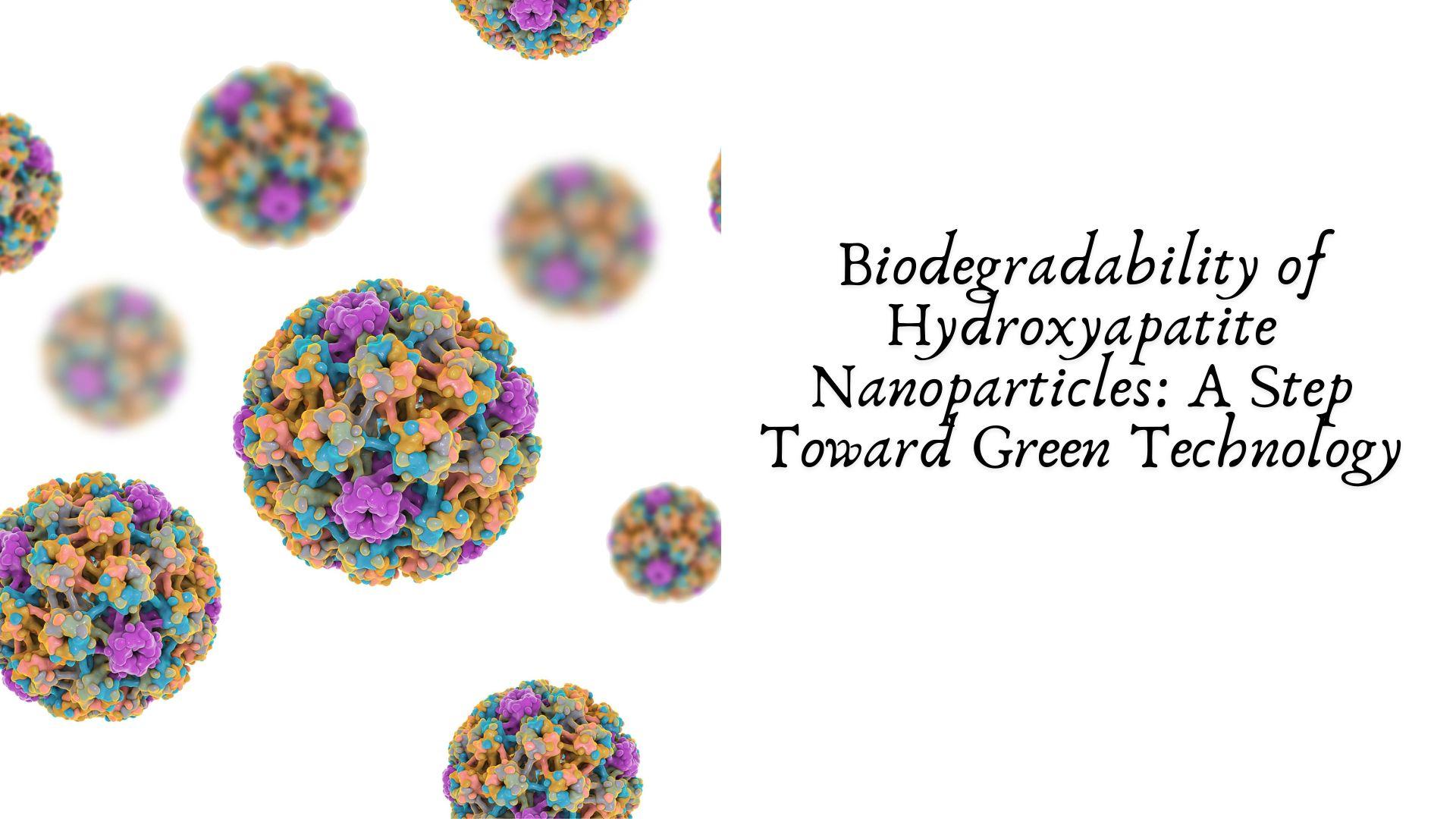Biodegradability of Hydroxyapatite Nanoparticles: A Step Toward Green Technology

Introduction
The advancement of nanotechnology has led to the development of various nanoparticles for biomedical, environmental, and industrial applications. Among these, hydroxyapatite nanoparticles (HAp-NPs) have gained significant attention due to their biocompatibility, bioactivity, and potential for biodegradability. With growing concerns about environmental sustainability, the focus on biodegradable nanomaterials is crucial. This article explores the biodegradability of hydroxyapatite nanoparticles and their role in promoting green technology.
Understanding Hydroxyapatite Nanoparticles
Hydroxyapatite (Ca₁₀(PO₄)₆(OH)₂) is a naturally occurring mineral form of calcium phosphate, primarily found in bones and teeth. Synthetic HAp-NPs are widely used in biomedical fields, including bone grafting, drug delivery, and dental applications. Their chemical similarity to human hard tissues makes them an ideal candidate for medical applications, while their degradability ensures minimal long-term environmental impact.
Biodegradability of Hydroxyapatite Nanoparticles
The biodegradability of hydroxyapatite nanoparticles is determined by several factors:
Chemical Composition and Crystallinity
-
The solubility of HAp-NPs depends on their crystallinity and Ca/P ratio. Low-crystallinity hydroxyapatite degrades faster, making it more suitable for biodegradable applications.
Environmental Conditions
-
The pH, temperature, and presence of enzymes influence the degradation process. In acidic environments, such as inflammatory sites in the body, hydroxyapatite dissolves more readily.
Particle Size and Surface Area
-
Smaller nanoparticles with a higher surface-to-volume ratio tend to degrade faster due to increased interaction with biological fluids.
Surface Modifications
-
Functionalization with biodegradable polymers or bioactive agents can enhance the controlled degradation of HAp-NPs.
Biodegradation Mechanisms
Hydroxyapatite nanoparticles undergo biodegradation primarily through dissolution and enzymatic breakdown:
-
Dissolution: In physiological conditions, hydroxyapatite dissolves into calcium and phosphate ions, which are naturally recycled in biological systems.
-
Enzymatic Degradation: Enzymes such as alkaline phosphatase facilitate the breakdown of HAp-NPs, aiding in their complete absorption and utilization.
Applications in Green Technology
The biodegradability of hydroxyapatite nanoparticles makes them an excellent candidate for sustainable applications:
Biomedicine
-
HAp-NPs are used in orthopedic and dental implants, ensuring gradual dissolution and integration with natural tissues.
-
Their use in drug delivery systems reduces the need for synthetic, non-degradable carriers.
Water Purification
-
Hydroxyapatite can remove heavy metals and toxins from wastewater and subsequently degrade without introducing harmful residues.
Agriculture
-
HAp-NPs are explored for controlled-release fertilizers that dissolve gradually, minimizing environmental pollution.
Eco-Friendly Coatings
-
Biodegradable hydroxyapatite coatings for medical devices and packaging reduce plastic waste and toxicity.
Challenges and Future Perspectives
Despite their advantages, hydroxyapatite nanoparticles face challenges such as:
-
Controlling Degradation Rates: Optimizing particle properties to achieve desired degradation profiles is an ongoing research focus.
-
Scalability: Large-scale production with consistent quality remains a challenge for commercial applications.
-
Regulatory Approvals: More studies are needed to establish standardized guidelines for their safe and effective use.
Future research aims to enhance the tunability of HAp-NPs, develop hybrid nanomaterials, and integrate them into broader sustainable practices.
Conclusion
The biodegradability of hydroxyapatite nanoparticles presents a significant step toward green technology. Their ability to break down into non-toxic components aligns with the growing demand for sustainable nanomaterials. From biomedical applications to environmental remediation, HAp-NPs offer a promising future in reducing ecological impact while maintaining functionality. As research progresses, hydroxyapatite nanoparticles are poised to play a pivotal role in advancing eco-friendly innovations across multiple industries.
- Art
- Causes
- Crafts
- Dance
- Drinks
- Film
- Fitness
- Food
- Jogos
- Gardening
- Health
- Início
- Literature
- Music
- Networking
- Outro
- Party
- Religion
- Shopping
- Sports
- Theater
- Wellness


